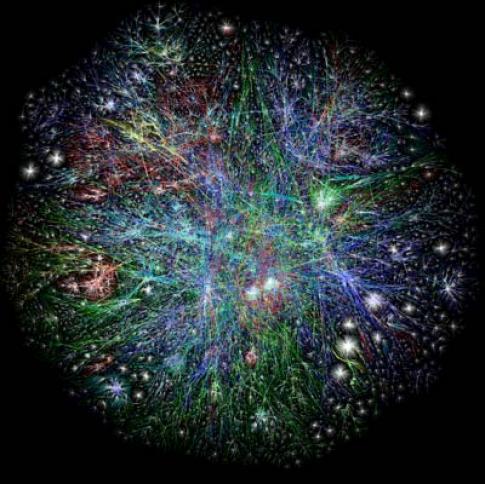Latest News
Voyagers detect birth pains of stars

Ageing spacecraft confirm that Lyman-alpha radiation comes from stellar nurseries in the Milky Way.
Richard A. Lovett
Far beyond the orbit of Pluto, the two ageing Voyager spacecraft have detected ultraviolet light that confirms that a type of radiation known as Lyman-alpha emissions come from parts of the Milky Way where stars are born.
It isn't a surprising find, but it's important because it helps confirm an old hypothesis about star formation. The study appears today in Science1.
Lyman-alpha emissions are produced when ultraviolet light hits neutral hydrogen atoms, splitting them into protons and electrons. When the two recombine, they can form an atom in an excited state that emits ultraviolet light at a characteristic wavelength, known as the Lyman-alpha band.
Because star-forming regions tend to have hot stars that emit a lot of ultraviolet light, astronomers have long believed that Lyman-alpha emissions mark galaxies with intense star formation.
"This radiation traces where young, hot stars are being born," says astronomer Rosine Lallement of Paris Diderot University, lead author of the new study.
That, at least, is the hypothesis. But until now, nobody had seen Lyman-alpha emissions from known star-forming zones in our own galaxy.
The problem is that the Solar System pulls in hydrogen from interstellar space. This scatters the Sun's own Lyman-alpha emissions in random directions to produce a Lyman-alpha 'fog' that obscures more distant radiation.
Earthbound or Earth-orbiting telescopes cannot penetrate this fog. Emissions from distant galaxies are visible only because the galaxies’ motion shifts their Lyman-alpha emissions into other frequencies.
Enter Voyager 1 and Voyager 2.
The spacecraft, launched in 1977, travelled on different courses. But both have now reached the zone where the local mist of hydrogen atoms meets the interstellar medium.
The result: a window out of local space. "The Voyagers are crossing the boundary region," Lallement says. This has let astronomers see Lyman-alpha emissions from nearby star-forming zones. "It is like beginning to see small candles within a brightly lit room," she says.
"We've known for a long time that we expect Lyman-alpha from the galaxy," says Lallement's co-author, Bill Sandel, a space physicist at the University of Arizona in Tucson. "This is the first time that it's been detected. So now it's possible to compare the expectations of models with a real result, taken from a region where the environment is well enough known to say with confidence whether the star-formation model is working or not."
Into the void
"It's a pretty neat measurement," says James Rhoads, an astronomer at Arizona State University, Tempe, Arizona, who was not part of the study team. Even at the Voyagers' vast distances from the Sun, 90% of the Lyman-alpha signal still comes from sunlit hydrogen.
But galaxies differ, he warns. "The Milky Way is something like 100 to 1,000 times more massive than the typical galaxies I study from early in the history of the Universe – and these galaxies are forming stars ten times faster than the Milky Way."
The finding is an unexpected benefit of two missions intended primarily to study the outer planets, and whose instruments were designed to study planetary atmospheres, not interstellar space.
"The Voyager 1 and 2 spacecraft are now completing a journey into interstellar space that was only a dream in 1977," Sandel says. Nature
Rate this article




 del.icio.us
del.icio.us Digg
Digg

Post your comment